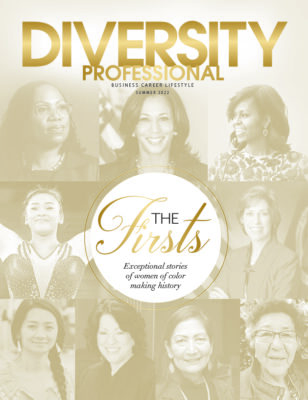Dissension In The Workplace
There have been rallies, gatherings and protests all over the country. Would it be wise to say that this has not spilled over into the workplace? Let’s not think these same individuals, regardless of their beliefs, are not in the workplace. The impact is seen in subtle ways. We like to pretend this is not the case. However, effective leadership would not turn their heads, and pretend this is not important or a major concern in their organization. When there is conflict and tension between an employee’s personal views and an employer’s corporate social initiatives and public perception it is played out in many ways. It is most divisive when it is in the management ranks where employee decisions are made.
Another thing to consider is how diversity and inclusion are viewed and supported within the organization. Recently, Deloitte decided to do away with diversity/affinity groups in the organization, ending its women’s network and other affinity groups and shifting the focus to men. This is considered the upside-down approach. However, the opinion is not every group has been turned upside-down. What about removing the “good ole boy” network/groups? Those groups that are a part of private, invitation-only clubs or gatherings and that have business meetings where things are discussed, views are established and decisions are made but are not as inclusive and balanced for the organizations they represent. Could this work if all these groups are addressed as well? Here are some additional things that can help leaders, managers and organizations minimize dissension in the workplace to be more effective in the diverse workplace world.
Evaluate
Evaluate all groups that exist in and/ or are supported by the organization but are not inclusive. This requires leadership to address all aspects of the culture of the organization. Secondly, evaluate the focus of your diversity and inclusion efforts. Is there more focus on women rather than the remaining members with minority designation? Conducting a thorough evaluation will provide the insight needed to develop plans to be more impactful. There is a shift occurring in the workplace where the minority is the majority but is still the minority in pay and representation in executive ranks.
Educate
Managers need to be trained on how to address the concerns or behaviors of individuals who let their personal views and beliefs impact how they behave at work, including themselves. Personal views have a tendency to spill over into the daily operations of an organization to the point that it does not align with the mission, vision and goals. If this continues to not be addressed and corrected, the culture and success of the organization will change. Providing specific training on how you expect leadership to behave is needed. The assumption cannot be that they know; you must assume that they don’t know. The focus on this type of development is needed and should be at the top of your list for talent development at all levels of your organization.
Zero Tolerance
If you suspect that your policies may be outdated or no longer fit their purpose, change them. Now would be a great time to complete an audit of exactly where you are and what challenges may be ahead. Review all of your policies and procedures to ensure they are up to date and relevant for the changes happening in the workplace and community. All of your employees need to know whom to contact when they experience or witness the unfair treatment of anyone in the workplace. Have zero tolerance for any individual who behaves outside of the documented policies that they have been educated on how to conduct themselves.









